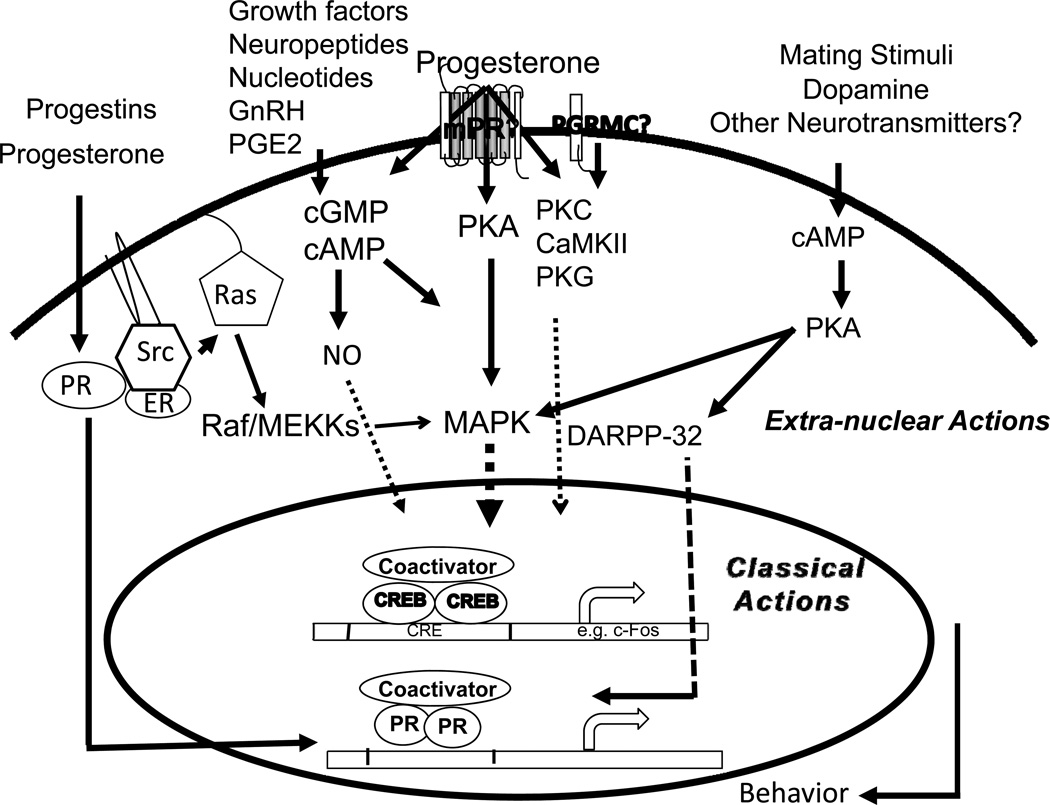Fig. 2.
A schematic representation of the crosstalk between classical and non-classical mechanisms in female reproductive behavior. Classical mechanism of action by progesterone- and ring-A class of progestins, mediated by classical PRs, promotes interactions with coactivators and plays a predominant role. Progesterone effects mediated by second messengers (cAMP, cGMP) and extra-nuclear signaling kinases (PKA, PKC, PKG, CaMKII) activates MAPK signal transduction cascade, phosphorylation of nuclear transcription factors, PRs/ PR coactivators and CREB. Progesterone and progestins, can act via the Src kinase, interact with extra-nuclear PRs to activate MAPK cascade. Progesterone acting via the extra-nuclear PKA/MAPK/DARPP-32 pathway can cause a decrease in phosphatase activity and an increase in phosphorylation of PR and/or its coactivators. Mating stimuli (VCS), dopamine or other neurotransmitters can stimulate PKA activation, phosphorylates DARPP-32, leading to the activation of CREB/PR/coactivators. VCS-stimulated PKA activation can also interact with MAPK cascade. Neuropeptides, nucleotides, growth factors, GnRH and PGE2 can act through various receptor- and/or second messengers (cAMP, cGMP, NO) and transmit signals to the nuclear PRs or other transcription factors. Interactions between multiple pathways may serve as an amplification mechanism to converge on nuclear transcription factors and/or coactivators to regulate gene transcription and translation, to facilitate female sex behavior.

